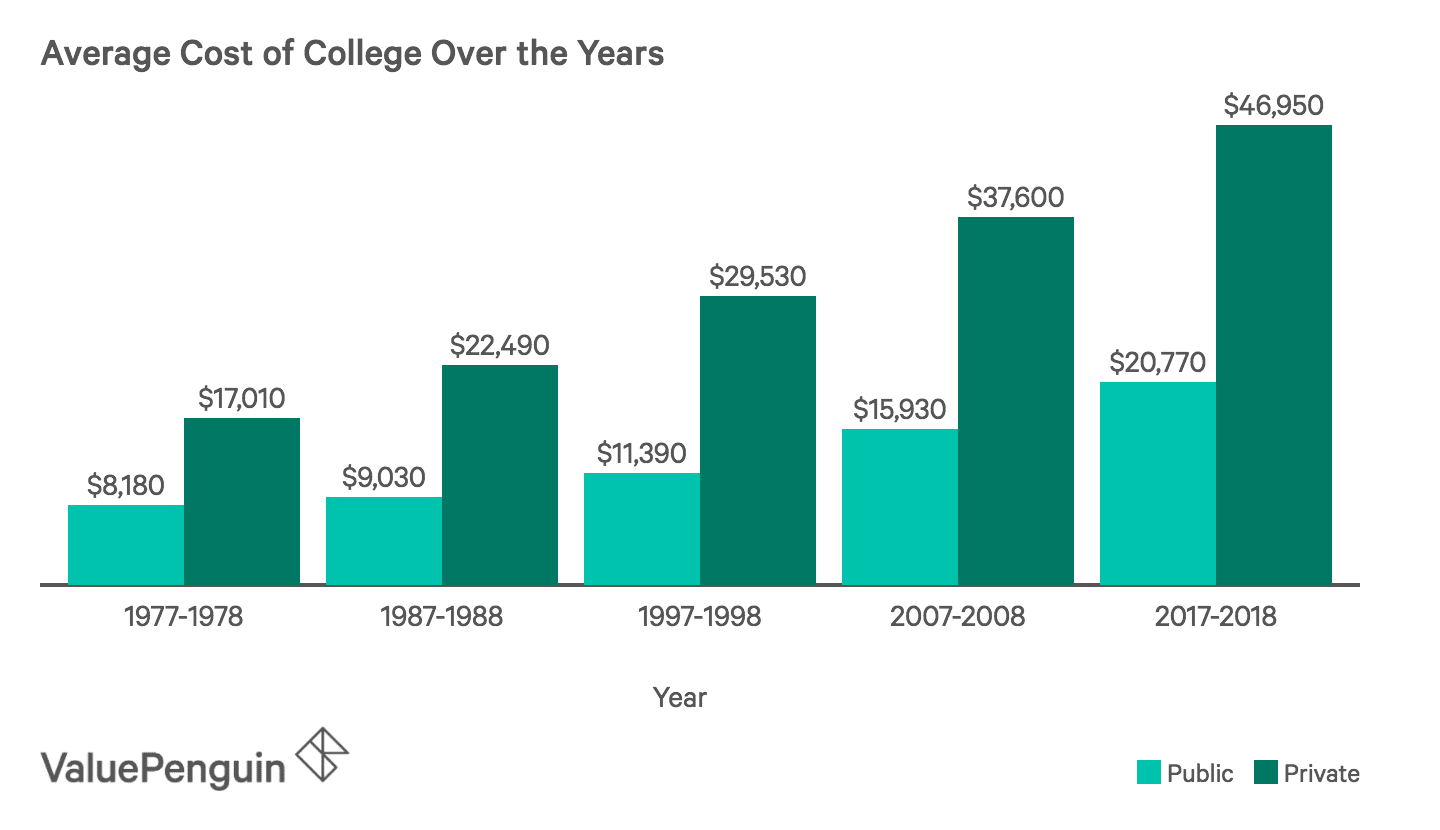College is not cheap… but I am sure you all know this as all my readers attend college here at Penn State. This cost does not just hurt families’ wallets; there in fact many other rippling effects of this cost. College costs tens of thousands of dollars, and if someone wants to go to school in a different state than the one in which they grew up, the price is even higher. A family could buy a nice house with the average cost of college tuition for 4 years. However, as we previously reviewed, the advantages of higher education are extremely beneficial to one’s career and their identity development. Despite these incredible advantages a college education brings someone, the cost is still very significant and has short term, and long term effects on families who send their child to a college. In this post we will be reviewing how the cost of college, costs students and families a great deal of hardships and obstacles.
For a family to send at least one child to school it involves a great deal of financial planning. The price for one child is substantial, but most families have more than one kid to send to school. Four years of school costs about 90,000 dollars, and in many cases more. So to then multiply this cost by two, three, or even more people really adds up. This cost can be up to hundreds of thousands of dollars. This is a reality that parents of students have to face. It influences how people spend money, where they live, how they save for retirement, and much more. One of the biggest impacts it has is limiting where a student can go to school. I was not able to go to my top option for school because it would be a financially poor decision. Luckily, and not, there is a way to help families manage this payment. Through student loans students and families can receive some help paying the cost of college upfront.

Student loans are very helpful, but can also bevery stressful and add up. There are two different types of loans which collect interest interest in different ways. The first of which are subsidized loans, which do not collect interest while you are in school. These type of loans are based off the financial need of a student. Then there are unsubsidized loans which are not based off financial need and collect interest from the second you take one until the time you pay it off. You can pay the interest off or choose to pay it all at the end which is called capitalizing the interest (UF). This can be very harmful due to the fact that if one waits to pay their interest on the loan, it will cost a great deal more because interest would accrue to a larger amount. Families may be unable to pay the interest for some payments and have no choice but to let it build up as interest. They are stuck paying the interest back and if they are unable to it ends up costing them. This is an example of the incredible pressure the cost of college can put on someone’s life in ways other than just the direct cost.
Work Cited
Picture Sources:
https://www.valuepenguin.com/student-loans/average-cost-of-college

